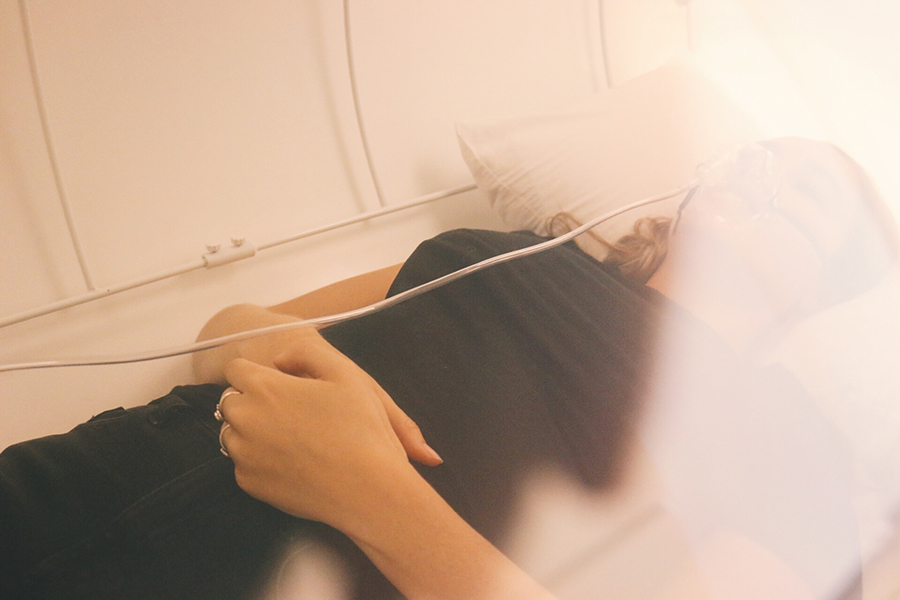
Author: Esperance Tide
Published: May 03, 2018
It’s easy to see how Esperance Recovery and Wellness Centre’s oxygen chamber could be met by locals as either space-age hoohah or just accepted as plain common sense. It was registered nurse Dee Bennier’s disappointment with the medical industry’s resistance to holistic approaches to health that compelled her to invest in a hyperbaric oxygen therapy chamber with co-owner Karen Chivell. Having had friends and family diagnosed with cancer, she researched endlessly the benefits of HBOT when it came to easing nausea and aiding balance for those undergoing chemotherapy or suffering from terminal illness.
HBOT is widely used in sports science and in hospitals in other parts of the world, but it hasn’t yet had approval for proven medical use in Australia. When we were invited to try out a session, it was easy to be optimistic but naturally a little bit sus of process given its status. In a nutshell, HBOT involves pumping air purified to 95 percent oxygen into a chamber and then compressed to the equivalent level of air pressure reached three metres below sea level. The pressure allows additional oxygen to saturate hard-to-reach parts of the body due to inflammation or poor blood circulation. It’s meant to aid brain function and reduce cortisol, helping with anxiety, depression and other mental or physical ailments.
When you climb into the chamber and lie down, it’s physically comfortable but obviously a little unnerving. It’s spacious—not as claustrophobic as it looks—a bit like sleeping in a swag. As the air pressure changes, your ears start popping. It’s exactly like descending in an aeroplane or diving deep underwater. Dee talks you through the process to keep you calm and you really start to see how breathing plays an important role in the whole process and its benefits. Once you reach the intended air pressure, she leaves you to relax. It’s a great opportunity for a decent time out—a chance to focus on meditation or even have a snooze.
Like typical overstimulated millenials, we do get a bit bored in there. With more sessions, once you get more used to the process, it would no doubt get easier to relax and you could probably go in there for very, very relaxing sleep. But we can’t help but feel like next time we’d opt to listen to music, even if the phone is left on airplane mode. After a while, I was interested to discover my body felt like it was heating up internally while my skin remained cool to touch. It was unexpected—while I was open to the mental benefits of deep breathing in an almost-pure oxygen chamber, I wasn’t expecting a physical reaction to the exposure.
Eventually, Dee returns to the room and talks you through the process as the air pressure is restored and you emerge back into the land of the living. It feels good—you feel lighter, renewed. It’s a similar feeling to the endorphins and mental clarity that comes after a good workout. The whole session itself is really relaxing—a nice chance to slow down—but the best part is how you feel afterwards. It’s a real, lasting energy booster and you’ll likely sleep like a baby that night.
It’s an interesting process showing plenty of scientific signs of promise. From stress relief to sporting injuries, it’s curious to know how it would impact different people in different states. Even if you couldn’t afford to commit to a few sessions, a one-hour session would give you a good chance to settle in, get accustomed and reap the benefits. Hyperbaric oxygen therapy may look and sound like the stuff of a sci fi movie, but when you experience it for yourself, you’ll realise it’s really not such an alien concept.